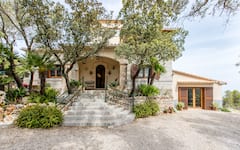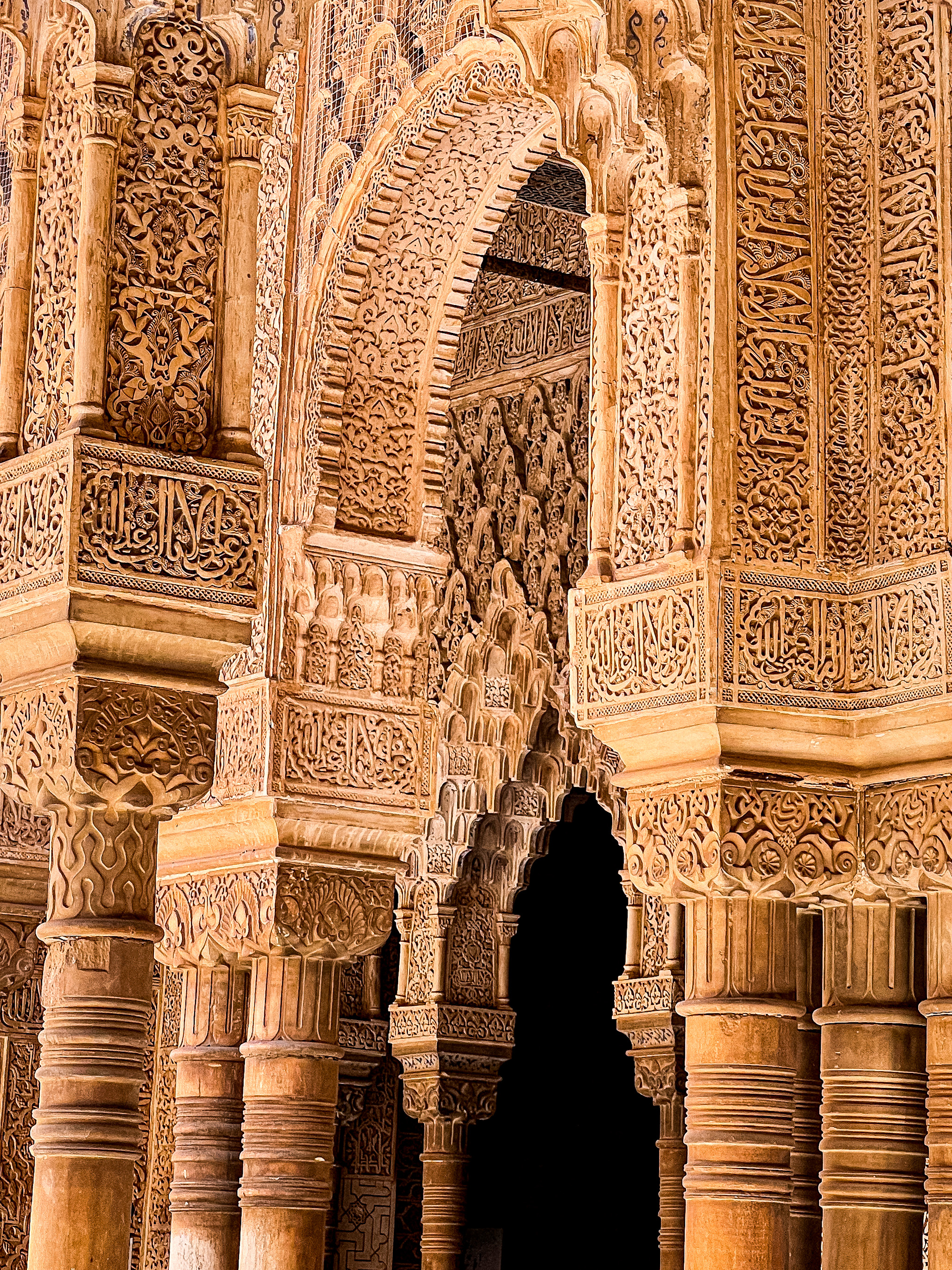When visiting Spain, many people enjoy taking home souvenirs of their trip. Each town and city offer a variety of souvenir shops with an array of items, perfect to recall a wonderful vacation.
Many are considered to be “kitsch” by the locals, and visitors should always look closely at the items before purchasing, as they may find the “souvenir” has its origins in China. However, there is a variety of authentic and truly beautiful items on sale, including the gorgeous hand-made fans, castanets, flamenco dresses and more.
Enjoy reading about some of the most popular souvenirs available in Spain below.
1. Espadrilles

Also known as alpargatas or esparteñas, espadrilles are casual shoes widely known for their characteristic rope soles. More often than not, these shoes are flat, but they can also be high-heeled.
Espadrilles started as peasant footwear in the 14th century and held strong historical ties to the Spanish regions of Catalonia, Aragon, the Basque Country, and even the Occitania region in France. These shoes started becoming fashionable during the turn of the 20th century, especially when famous public figures, such as Pablo Picasso, Salvador Dalí, John F. Kennedy, and Yves Saint Laurent, wore them.
You can easily find Espadrilles anywhere in Spain. Prices vary depending on the style, with the cheapest being 14 EUR (15.03 USD) and the luxurious ones going as high as 100 EUR (107.34 USD) or even higher.
2. Jamón

Generally speaking, jamón is a type of dry-cured ham that’s produced in Spain. Regularly served as a component of tapas (the Spanish term for finger foods or appetizers), this dish is one of the most iconic and globally recognized items in Spanish cuisine.
In a way, jamón shares similarities with Portugal’s presunto and Italy’s prosciutto, which are both dry-cured hams as well, but the main difference lies in the duration of the cure. Additionally, there are now different variations of jamón within Spain, and you can find more variations in other Spanish-speaking countries. Two of the most popular kinds of jamón are jamón ibérico (made from Iberian-breed pigs) and jamón serrano (ham from the sierra or mountain range).
3. Terracotta Tapas Dishes

Tapas are some of the best-known dishes in Spanish cuisine. If you like to incorporate them into your meals — or if you want to start serving tapas — you would need dishware to serve these appetizers. And what better to prepare tapas than to place them on a terracotta dish?
Terracotta tapas dishes usually come in round shapes, and their simple design adds a rustic charm to the dining table and your kitchen. They can be used on all heat sources — except induction — and are also freezer safe. So, you can easily use these terracotta dishes to cook some calamari, patatas bravas, and other tapas and bring them straight to the table.
You might be interested in these Airbnbs!
4. Olive Oil

Spain is the world’s leading olive oil producer — in fact, more than half of the world’s olive oil (which amounts to more than 350 million olive trees harvested annually) is produced in Spain alone. Because of this, you don’t want to miss out on buying some olive oil when visiting this country.
Best of all, you get many variations because manufacturers can be found in every Spanish region. You can find extra virgin olive oils with intense flavors or those that are more subtle in their aroma. Whatever you prefer, Spain will undoubtedly have a bottle ready-made for you.
Spain Tour Guide
Asier Garmendia
Hi! I’m Asier, welcome to Granada, the most wonderful and charming city in the world. I am a licensed tour guide, with a degree in Art History and specialized in the Alhambra. Let me show you as a local our traditions, food and heritage. The city of the Alhambra will not disappoint you !. Please don`t hesitate to contact me for private and flexible tours. My job is my passion!
Tours by Asier
5. Castañuelas (Castanets)

Castañuelas – or castanets, as they are known in English – are a hand-held percussion instrument influential in the art of Spanish flamenco music and dance and are used in conjunction with the classic Spanish guitar. Castanets are part of Spanish folklore and culture, but actually date back to the Phoenicians, who traded the instruments throughout the Mediterranean area. Before they were used in the art of flamenco, castanets were used as an instrument in classical Spanish music. All the popular souvenir shops still sell them today, although some are rather “kitsch” in design. Enjoy seeing the castanets in action in the video included here.
The History of Castanets
Website: The History of Castanets
6. Spanish fan

Using a hand-held fan to cool down is nothing new. Reportedly the origin dates back to ancient Egypt, where the people kept cool with ostrich feather fans. The idea of a foldable fan was born in Japan, where the makers became inspired by bats’ wings. The idea was picked up in Europe during the 16th-century when the Portuguese began to make and use them. They eventually spread to Spain, which is now one of the few European countries to make them. These days a variety of hand-painted, screen-printed or lace-trimmed fans are available at all the local souvenir shops and are still widely used by the locals when outside of air-conditioned areas.
Spanish fans
Website: The Origin of Fans
7. Flamenco dress

Flamenco dresses are worn by the traditional Spanish flamenco dancers. Figure-hugging in style, the dresses have a ruffled skirt and sleeves to add to the effect of the dance. While the dresses are identified with Andalusia and its famous flamenco culture, the design originated with the Romani people, or Spanish gypsies from the 19th-century. While the dresses can be expensive to purchase, most souvenir shops do offer a version that is popular with children, although visitors are warned that those dresses (as pictured above left) are normally manufactured in China.
Flamenco dresses
Website: Spanish Flamenco Dress
8. Fridge magnets

Fridge magnets are a popular item worldwide, used to post items, photos and notes to a refrigerator door. Spain is no exception and offers a range of beautiful fridge magnets, depicting scenes of the various monumental cities, flamenco dancing and other more whimsical and often funny images. Small and compact, these items make the perfect souvenir, while weighing little and taking up next to no space in a suitcase.
Spanish fridge magnets
Website: History of Fridge Magnets
9. Spanish snow globes
Madrid, Spain
Posted by Snow Globes on Sunday, 10 March 2013
Snow globes have been a popular item for quite a while throughout the world. The idea originated in 1900 when Erwin Perzy was working with electric light bulbs. Because of the dim light given by the light bulbs at the time, Perzy noticed that shoemakers were filling the globes with water and putting them in front of candle flames to create spotlights in their shops. He then improved on the idea by mixing semolina flakes with the water which eventually led to the snow globe as it is today. Spanish souvenir shops have picked up on the trend and offer a wide range of these attractive ornaments, featuring iconic cities like Madrid or Seville, which turn into a snowy wonderland when shaken.
History of Snow Globes
Website: Brief History of Snow Globes
10. Flamenco dolls

The best in flamenco dolls is no longer available as a new item, as the famous Marin Chiclana doll factory has unfortunately closed. However, souvenir shops still sell a range of attractively dressed male and female flamenco dancing figurines. Of interest to note, a museum has been created in Chiclana, displaying many of the original and beautiful dolls with their traditional flamenco clothing.
Marin Chiclana Museum
Address: Calle Arroyuelo, 16, Chiclana, Spain
Website: Marin Chiclana Museum
11. Bull ornaments

A range of souvenirs come in the form of the Osborne or Barcino bull, from key rings to wine stoppers, T-shirts, beach towels, snow globes and small statuettes. The ornaments can be bought at bargain prices in the local souvenir shops, or for collectors on a higher budget, the beautiful Lladro porcelain ornaments are well worth the price.
Lladro porcelain figurines
Website: Lladro
12. Bota (Wineskin)

The Spanish bota wine bags have been used since ancient times by travelers and shepherds in Spain, but are still in use today as a traditional item at bullfights and festivals. The bags are made from cured goat skins with the interior lined with pine pitch to stop the wine from leaking. While visitors probably won’t want to drink wine from the botas, they do make an attractive wall feature.
The History of Bota Bags
Website: The History of Bota Bags
13. Bullfighting/flamenco posters

Many bullfighting or flamenco posters are considered collector’s items these days. They have been posted in cities and towns all over Spain for many years to announce various events. However various representations are also available in the various art and souvenir shops in Spain and make a lovely reminder of a trip to the country.
Bullfighting posters
Website: Bullfighting posters
14. Pottery

Andalusia is particularly famed for its beautiful and colorful glazed pottery. Available in markets throughout the region and in the souvenir shops, pieces range from small ashtrays and vases to larger plates and flower pots, perfect to brighten any home.
Spanish pottery
Website: Pottery of Andalusia
Enjoy browsing the souvenir shops of Spain
Whether looking for something small as a keepsake, or a larger item as a gift, there are many beautiful objects on sale in Spain. If choosing a larger item, speak to the shop manager to find out about potential delivery to your home.
History
Get Trip101 in your inbox
Unsubscribe in one click. See our Privacy Policy for more information on how we use your data





















Create an account to